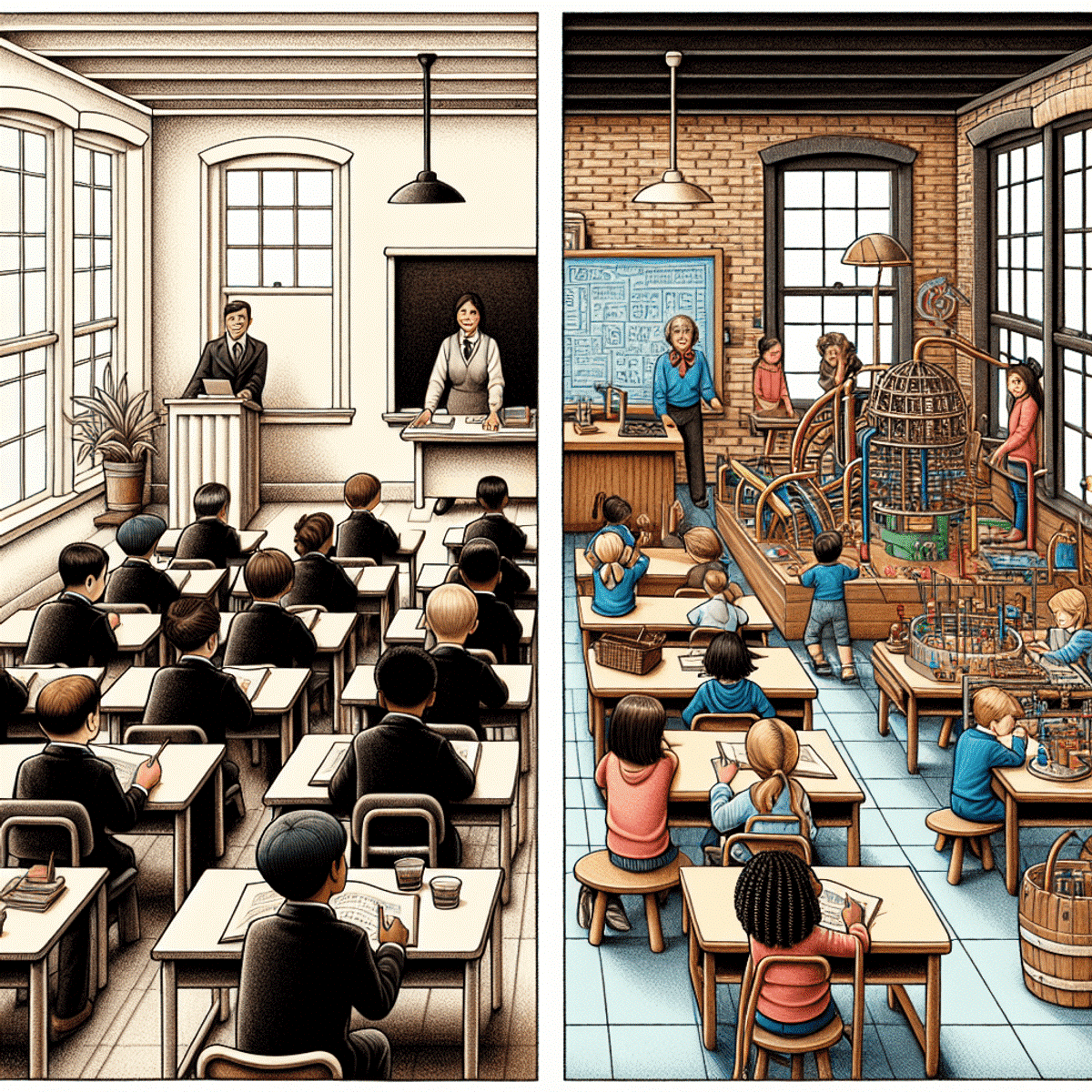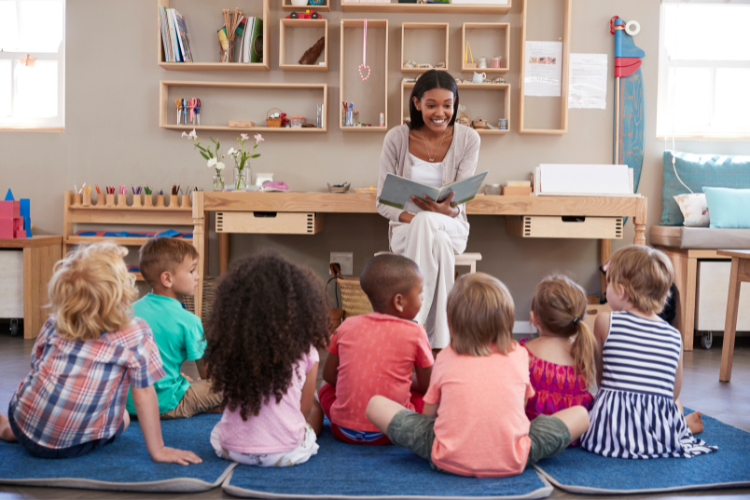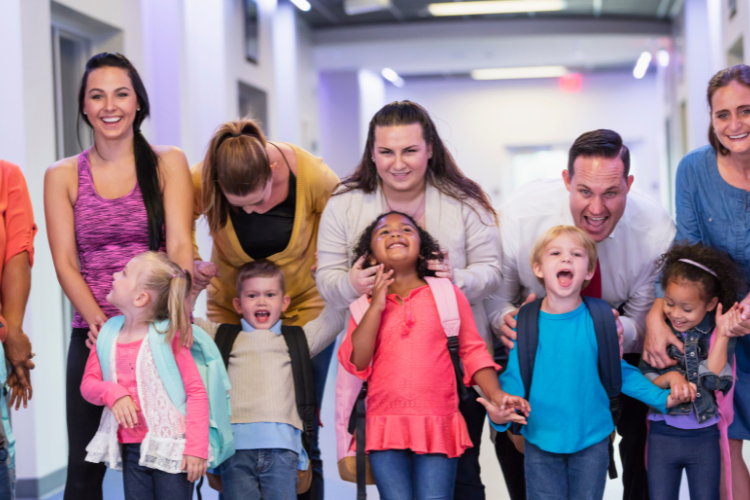


The world of education is changing, and school choice is becoming an important factor for many families. Parents now have a big decision to make: should they go for traditional schools or explore non-traditional options? This discussion has gained traction as educational needs become more varied and tailored.
4Kids.com is here to help parents understand these choices better. We provide detailed information about both types of schools so you can make the right decision for your child’s learning journey. Whether you prefer a structured setting or an innovative approach that puts your child at the center, it’s crucial to explore all possibilities to find the best fit for their education.
Traditional schools have long been the cornerstone of education, offering a structured and familiar approach to learning. Characterized by a rigorous curriculum and often a strict dress code, these institutions provide an environment that is both disciplined and predictable. Many private primary schools, especially those with a religious focus, emphasize values and traditions that align with their educational mission.
Classroom dynamics in traditional settings tend to be uniform across various institutions. Students advance through different grade levels with new teachers each year, ensuring exposure to diverse teaching styles and subject matter expertise. This system encourages students to adapt to different expectations and work collaboratively on the same activities as their peers.
A hallmark of traditional education is its emphasis on standardized testing. From early grades through high school, students engage in assessments designed to measure academic proficiency against nationwide benchmarks. High school students often prepare for standardized exams like the SAT and participate in Advanced Placement (AP) courses, which are critical for college admissions.
Such emphasis on testing stems from the belief that standardized metrics provide an objective measure of student achievement and school performance. This can influence educational strategies, as schools may tailor curricula to improve test scores, sometimes at the expense of creative or exploratory learning experiences.
By understanding these elements of traditional schools, parents can better evaluate whether this structured approach aligns with their child’s educational needs and future aspirations. Consideration of factors like classroom environment, teaching methods, and assessment focus will play a crucial role in making an informed decision.

Non-traditional schools represent a shift from conventional educational practices, emphasizing alternative teaching methods and personalized learning experiences. These institutions often challenge the one-size-fits-all approach, instead offering tailored educational paths that cater to individual student needs and interests.
Alternative Teaching Methods: Non-traditional schools prioritize innovative pedagogical strategies over traditional instruction. This could include project-based learning, experiential education, or inquiry-based approaches.
Personalized Learning Experiences: Students in non-traditional settings often have more autonomy and freedom to explore subjects at their own pace. This customization can lead to enhanced engagement and deeper understanding of the material.
Several well-known educational models fall under the umbrella of non-traditional schooling:
Montessori: Focuses on self-directed activity, hands-on learning, and collaborative play. Montessori classrooms are designed to foster independence and respect for a child’s natural psychological development.
Waldorf: Emphasizes creative expression and social responsibility. Waldorf schools strive to nurture a child’s imagination and creativity through arts-based curriculum and holistic development.
Reggio Emilia: Values the child as strong, capable, and resilient. The Reggio approach encourages children to express themselves through multiple forms of communication, promoting exploration through projects that interest them.
Teacher Continuity: Unlike traditional schools where students may have different teachers each year, non-traditional schools often allow students to stay with the same teacher for multiple years. This continuity helps build strong relationships and fosters a deeper understanding of each child’s learning style.
Flexible Pacing: Students are encouraged to progress at their own speed, allowing them to fully grasp concepts before moving on. This flexibility can be particularly beneficial for fostering a love of learning as students are not pressured by rigid timelines.
Non-traditional schools offer unique educational experiences that can be highly beneficial for many students. Understanding these differences is crucial when considering what type of school environment might best suit your child’s needs.
When looking at the educational philosophies of traditional and non-traditional schools, we can see some major differences. Traditional schools usually stick to structured curricula, standardized testing, and a one-size-fits-all approach to education. These schools prioritize academic rigor and consistency across classrooms, preparing students for standardized assessments like SATs and Advanced Placement courses. The educational philosophy here is all about measurable outcomes and a straight path through grade levels.
On the other hand, non-traditional schools are more open-minded and flexible in their teaching methods. They focus on personalized learning experiences where students are encouraged to explore at their own pace. This approach nurtures creativity, critical thinking, and independence. The philosophies of Montessori, Waldorf, and Reggio Emilia are prime examples of this educational model, each offering unique frameworks that prioritize holistic development over rote memorization.
Carmelita Hinton, a pioneer in progressive education, offers valuable insights into these different educational approaches. Her work with The Putney School emphasized experiential learning, student agency, and community involvement—values that strongly resonate within non-traditional schooling environments. Hinton’s philosophy aligns with the belief that education should be a transformative experience rather than just a way to pass on information.
These opposing educational philosophies have a direct impact on student engagement levels and overall learning outcomes. Traditional schools may provide structure and predictability that can benefit certain learners; however, non-traditional settings might foster higher engagement by allowing students to pursue their interests passionately. Ultimately, deciding between these schooling options involves considering which environment best supports a child’s curiosity, motivation, and long-term academic success.
For families exploring these options in California or beyond, 4Kids.com is an invaluable resource. Our platform offers detailed insights into both traditional and non-traditional schools to help parents make informed decisions tailored to their child’s unique educational needs.
The impact of educational approaches on student outcomes can be profound, influencing both academic performance and social development. Traditional schools, with their structured curricula and emphasis on standardized testing, often prioritize measurable academic achievements. This approach can result in students who are well-prepared for college entrance exams like the SATs, and who excel in Advanced Placement courses. However, the focus on uniformity may sometimes limit creative thinking and adaptability.
Non-traditional schools, such as Montessori or Waldorf institutions, offer a different perspective. Here, the emphasis is on personalized learning experiences that cater to the individual pace and interests of each student. This approach can foster a love for learning and boost social skills through collaborative projects and multi-age classroom settings. While these schools might not stress exam preparation, they prepare students for college by developing critical thinking and problem-solving skills.
Parental involvement plays a crucial role in both settings. In traditional schools, parents often support their children by reinforcing structured study habits at home. Non-traditional schools encourage parents to engage actively in the learning process, supporting projects and experiential learning activities. The partnership between school and family becomes a vital element in enhancing educational outcomes across various schooling environments.
Delving deeper into this dynamic offers valuable insights for parents navigating educational choices for their children.

Choosing the ideal educational path for your child involves a thoughtful analysis of various factors. The decision between traditional and non-traditional schools can be pivotal in shaping your child’s academic journey and personal development. Here are some practical tips to help you find the best school for your child:
Assess Learning Styles: Consider your child’s unique learning preferences. Traditional schools often provide structured environments with set curricula, while non-traditional schools may offer more flexibility and personalized learning experiences.
Visit and Observe: Schedule visits to both traditional and non-traditional schools. Observing classrooms in action allows you to gauge whether the teaching style and environment align with your child’s needs.
Evaluate Curricular Activities: Determine if the school’s curricular focus matches your child’s interests. Traditional schools may emphasize standardized testing and advanced courses, whereas non-traditional schools might prioritize creative or experiential learning approaches.
Teacher-Student Dynamics: Examine how teachers engage with students. In traditional settings, students have different teachers each year, whereas non-traditional schools may allow students to form stronger bonds by having the same teacher for multiple years.
Parental Involvement: Reflect on how much involvement you can commit. Both school types benefit from active parental participation; however, the expectations can differ significantly between them.
Using these guidelines will support you in making an informed decision that best suits your child’s educational needs and future aspirations.
Choosing the right private school for your child requires understanding the differences between various types of institutions. Each type of private school has unique characteristics that can impact educational quality and learning experiences.
These are self-governed institutions, often guided by a board of trustees. Independence allows them to create unique curricula and educational philosophies, which can result in a more customized learning environment. Many independent schools focus on smaller class sizes and personalized attention.
Operated by corporate entities, these schools may adhere to standardized curricula similar to public schools but with additional resources. Their structured approach can offer stability but might lack the flexibility found in independent settings.
Private schools, whether traditional or non-traditional, provide varying levels of educational quality based on their governance:
Curriculum Development: Independent schools often have the liberty to innovate, allowing for creative teaching methods akin to non-traditional approaches like Montessori or Waldorf systems.
Resource Allocation: Corporate entities may have greater financial resources, enhancing facilities and extracurricular offerings, aligning them closely with some traditional school characteristics.
Understanding these distinctions helps parents make informed choices about private school options. By considering whether an independent or corporate model aligns more closely with their values and educational expectations, parents can better navigate the landscape of traditional vs non-traditional schools.
When examining traditional vs non-traditional schools, it’s essential to recognize that there isn’t a universal solution when deciding the best educational path for your child. Each child’s needs and learning style are unique, which means the choice between these educational approaches should be tailored accordingly.
Key Considerations:
Individual Learning Styles: Some children thrive in structured environments with clear guidelines, while others excel in settings that allow for creativity and independent exploration.
Parental Involvement: The role of parents varies significantly between traditional and non-traditional settings, impacting the overall educational experience.
Long-term Goals: Consider how each schooling option aligns with your child’s future aspirations, whether they pursue higher education or other pathways.
At 4Kids.com, we encourage parents to explore both options thoroughly. By visiting schools and engaging with educators, you can make an informed decision that supports your child’s growth and success. For additional resources and guidance on navigating educational choices, visit our comprehensive directory at 4Kids.com.
Traditional schools typically focus on structured curricula, standardized testing, and dress codes, while non-traditional schools emphasize alternative teaching methods, personalized learning experiences, and often have more flexible classroom dynamics.
Non-traditional schools often adopt educational philosophies like Montessori, Waldorf, and Reggio Emilia, which prioritize student-centered learning, creativity, and individualized pacing in education.
Parental involvement can vary significantly; traditional schools may encourage participation through standardized events and meetings, while non-traditional schools often promote ongoing communication and collaboration with parents to support personalized learning experiences.
Parents should consider their child’s learning style, the school’s educational philosophy, classroom dynamics, extracurricular opportunities, and how well the school’s values align with their own family values.
Yes, private schools can vary widely; independent private schools may offer unique curricula or philosophies, whereas corporate entities might follow more standardized approaches. Understanding these differences is crucial for evaluating educational quality.
Understanding these differences helps parents make informed decisions regarding their child’s education based on individual needs, preferences, and learning styles, ensuring they choose an environment that best supports their child’s development.
Categories :
Tags :
Notifications